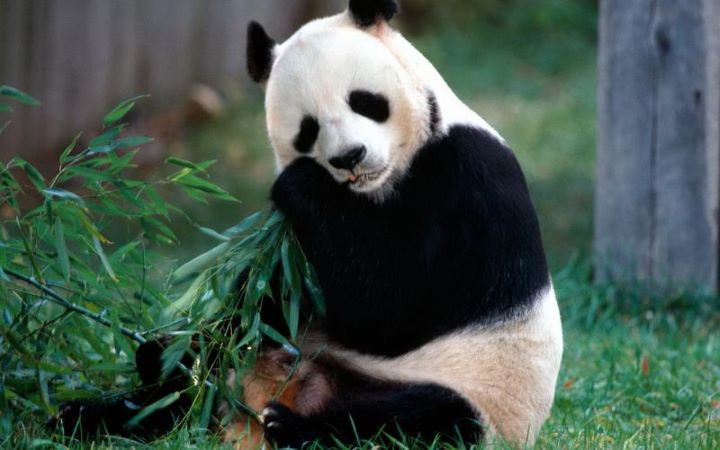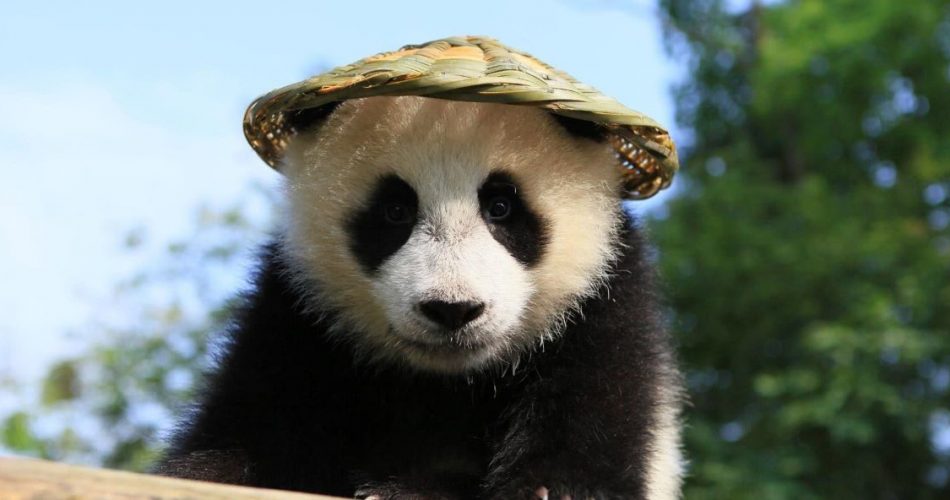The giant panda is one of the most precious animals in the world. Known as a “living fossil” and “national treasure of China”, the giant panda has lived on Earth for at least 8 million years.
However, the giant panda has become one of the endangered species in the world. Why are giant pandas endangered? This article will tell you all the reasons.
Table of Contents
- Why Pandas Are an Endangered Species?
- 5 Reasons for Endangered Giant Pandas
- How to Protect Endangered Species like Giant Pandas?
Why Pandas Are an Endangered Species?
Endangered species generally refer to precious, endangered, or rare wild animals and plants, which can be divided into two types: absolutely and relatively endangered species.
“Absolutely endangered species” mean a relatively small number of wild populations of endangered species over a long time, posing a risk of extinction.
“Relatively endangered species” mean that the absolute number of wild populations of certain endangered species is not too small, but it is relatively small compared to other species in the same category.
The giant panda is listed as an endangered species due to its scarce population, environmental damage, increasingly narrow habitat, and high risk of extinction due to past overfishing and poaching.
It is confirmed that there were only 1114 giant pandas left in the 1970s and 1980s. Later, with the efforts of the Chinese government and the international community, the number of giant pandas increased to 1864. In addition, China also keeps 548 giant pandas in captivity.
But as of now, the giant panda also remains an endangered species on the blink of extinction.
5 Reasons for Endangered Giant Pandas
Giant pandas face a severe living environment, due to factors like habitat reduction, difficult reproduction, and food scarcity.
#1: Reproduction Difficulties

The difficulty in reproduction has led to a slow increase in the number of giant pandas.
Firstly, the estrus period of pandas is very short, with only twice a year, in spring and autumn respectively.
The estrus period of male pandas lasts approximately 30-40 days, while that of female giant pandas only lasts 8-20 days, with an orgasm period of only 1-3 days, which leads to limited mating time of giant pandas. That is why pandas find it difficult to reproduce offspring.
Secondly, the reproductive system of giant pandas is susceptible to certain bacterial infections, which reduces the egg-laying rate of female pandas and the mating desire of male pandas. This is also one of the reasons why pandas are on the brink of extinction.
Finally, due to the segmentation of the habitat of wild giant pandas, the communication between giant pandas is hindered, increasing the risk of inbreeding.
Inbreeding may lead to genetic defects and genetic diseases, making it difficult for the endangered pandas to reproduce.
#2: Low Survival Rate
The low survival rate is also one of the important reasons why giant pandas have become endangered species.
Firstly, female pandas can automatically terminate the pregnancy.
When female pandas are disturbed or feel that the environment is not suitable for giving birth, they will automatically terminate their pregnancy and stop providing nutrients to their children, causing the panda baby to die miserably in the womb.
Secondly, pandas are likely to abandon their cubs.
Due to the lack of sufficient parenting experience among novice panda mothers, some of their cubs may face the risk of being abandoned or unfortunately dying.
Besides, some baby pandas die naturally due to their underweight at birth.
Finally, pandas are strongly dependent on their residence and cannot adapt to environmental changes.
The wandering life poses great risks to newborn babies. Coupled with the invasion of carnivores, the probability of panda survival is very low.
#3: Poor Absorption Capacity

Giant pandas mainly feed on bamboo, but their digestion and utilization rate of bamboo food are relatively low. The food stays in their body for a very short time, so giant pandas tend to eat a large amount of food and excrete the food rapidly to obtain enough energy to meet their needs.
As a result, the energy intake of giant pandas is greatly restricted. All the activities of pandas are based on the maximization of energy intake and the minimization of energy consumption.
However, the growth of bamboo is easily affected by climate change and human activities. The shortage of bamboo may lead to a shortage of food for pandas, thereby affecting their survival.
#4: Excessive Hunting of Human Beings
The discovery of giant pandas has caused a sensation in the world, with groups of explorers, hunters, and museum specimen collectors attempting to uncover the mysteries by hunting giant pandas.
Some poachers also have access to the fur of giant pandas or illegally trade their live bodies, and some even consume them as wild animals.
Before 1949, some countries acquired and captured over 20 live pandas in Wenchuan County, Sichuan, China, resulting in a sharp decrease in the number of giant pandas there.
For over 50 years, the number of giant pandas is still very small and has not yet increased.
Accordingly, the Chinese government issued multiple laws and policies to protect giant pandas and ensure their survival and reproduction.
Beyond that, the Chinese government has taken various measures to enhance public awareness of the protection of giant pandas.
#5: Habitat Reduction
The giant panda is a hygroscopic animal and is particularly particular about its living environment. Pandas are suitable for living in areas with lush vegetation, good bamboo growth, relatively stable temperatures, good concealment conditions, and sufficient water sources.
However, with the overexploitation of humans, global warming and other issues have become prominent, and the habitat of giant pandas has been damaged, forming isolated islands that are not interconnected.
Such a living environment has led to the segmentation of panda species and species degradation of giant pandas facing severe survival pressure.
So far, giant pandas are mainly distributed in the mountainous areas of Sichuan, Shaanxi, Gansu, and Qinghai in China, among which Chengdu, the “hometown of giant pandas” in Sichuan, is the most famous. These places have a mild climate and good vegetation, making them ideal environments for pandas to survive.
How to Protect Endangered Species like Giant Pandas?

To protect giant pandas, the Chinese government has taken various measures:
1. Establish a nature reserve.
To protect giant pandas, the Chinese government has established different nature reserves. The most famous of them are the Wolong Nature Reserve in Sichuan and the Qinling Nature Reserve in Shaanxi.
2. Conduct protection research.
These studies include in-depth research on the ecological habits and reproductive status of giant pandas, as well as research on the conservation genetics of giant pandas.
3. Perform international cooperation.
For example, China and the United States have signed the “Sino-US Giant Panda Cooperation Agreement” to jointly promote the protection and research of giant pandas.
Furthermore, the Chinese government actively participates in international conservation organizations such as the World Conservation Union.
4. Education and publicity.
The Chinese government disseminates knowledge about the protection of giant pandas to the public through various channels (museum exhibitions, television programs, and so on) to strengthen public awareness of the protection of giant pandas.
Meanwhile, the government has incorporated protection education into the school education and social education system.
5. Control human activities like hunting.
The Chinese government controls human activities via legal constraints and other means to provide a suitable environment for giant pandas, protect their food resources, and increase their opportunities for reproduction.
These measures have paid off, but there are still many problems to be solved. In the future, the Chinese government will further strengthen and improve various measures to ensure the survival and reproduction of giant pandas.
In short, protecting giant pandas is a shared responsibility and obligation for countries worldwide. As a member of the global village, we should also have a deep understanding of the conservation issues of giant pandas, actively participate in conservation work, and jointly protect this precious species, so that pandas can continue to play an important role in our ecosystem.
